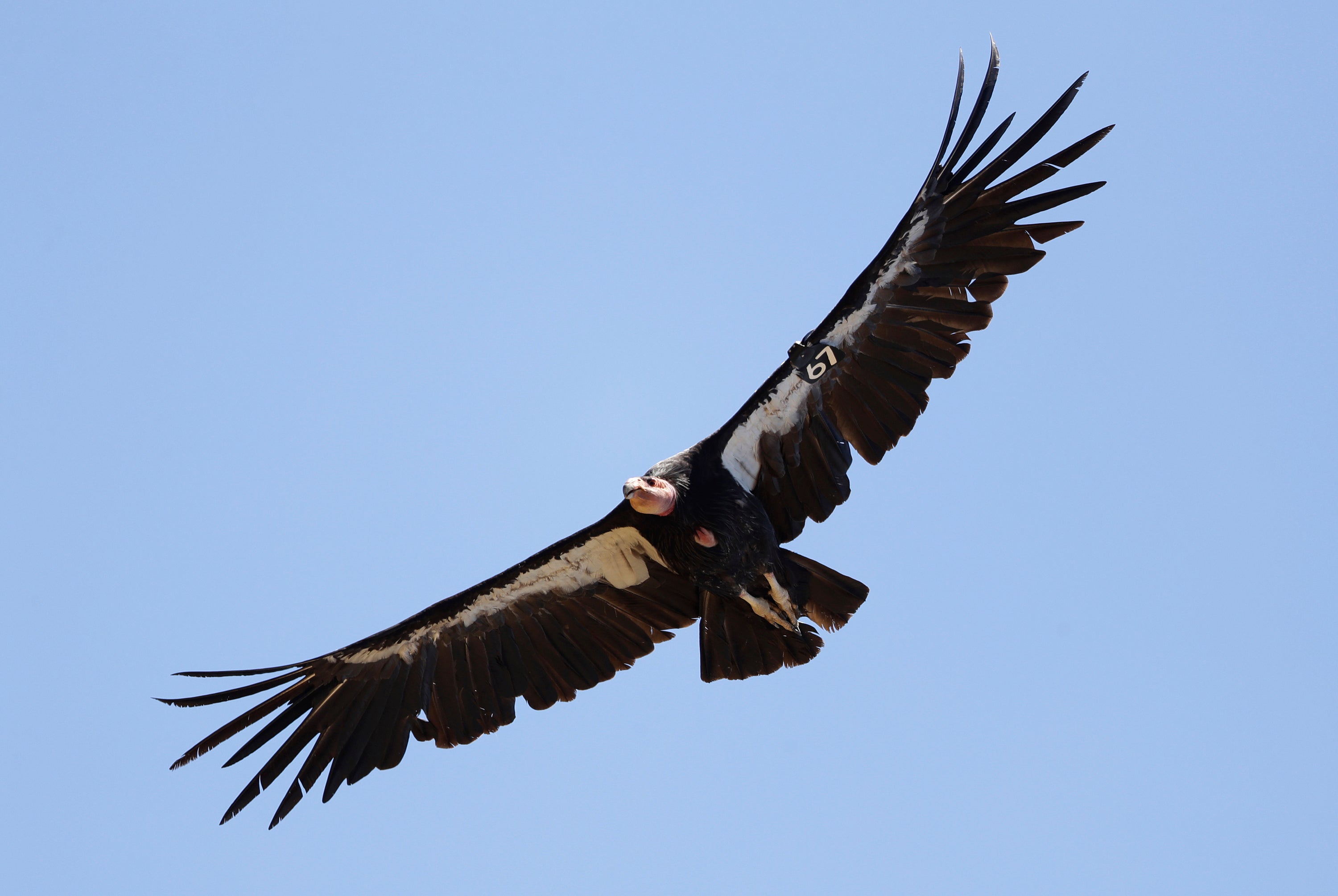Study finds California condors can have "virgin births"
A new study says endangered California condors can have “’virgin births.”

Your support helps us to tell the story
From reproductive rights to climate change to Big Tech, The Independent is on the ground when the story is developing. Whether it's investigating the financials of Elon Musk's pro-Trump PAC or producing our latest documentary, 'The A Word', which shines a light on the American women fighting for reproductive rights, we know how important it is to parse out the facts from the messaging.
At such a critical moment in US history, we need reporters on the ground. Your donation allows us to keep sending journalists to speak to both sides of the story.
The Independent is trusted by Americans across the entire political spectrum. And unlike many other quality news outlets, we choose not to lock Americans out of our reporting and analysis with paywalls. We believe quality journalism should be available to everyone, paid for by those who can afford it.
Your support makes all the difference.Endangered California condors can have “'virgin births," according to a study released Thursday.
Researchers with the San Diego Zoo Wildlife Alliance said genetic testing confirmed that two male chicks hatched in 2001 and 2009 from unfertilized eggs were related to their mothers. Neither was related to a male.
The study was published Thursday in the the Journal of Heredity. It's the first report of asexual reproduction in California condors, although parthenogenesis can occur in other species ranging from sharks to honey bees to Komodo dragons.
But in birds, it usually only occurs when females don’t have access to males. In this case, each mother condor had previously bred with males, producing 34 chicks, and each was housed with a fertile male at the time they produced the eggs through parthenogenesis.
The researchers said they believe it is the first case of asexual reproduction in any avian species where the female had access to a mate.
“These findings now raise questions about whether this might occur undetected in other species,” said Oliver Ryder, the study's co-author and director of conservation genetics for the San Diego Zoo Wildlife Alliance.
The non-profit alliance runs the San Diego Zoo and Safari Park and has been involved in a California condor breeding program that helped bring the giant vultures back from near-extinction.
With 10-foot (3-meter) wingspans, California condors are the largest flying birds in North America They once ranged throughout the West Coast. But only 22 survived in the 1980s when the U.S. government captured them and placed them in zoos for captive breeding. About 160 were bred at the San Diego Zoo and Safari Park.
There are now more than 500 California condors, including more than 300 that have been released into the wild in California, Arizona, Utah and Mexico
The asexual reproduction was discovered some years ago during widespread testing of genetic material collected over decades from condors, both living and dead, in breeding programs and in the wild.
“Among 467 male California condors tested in the parentage analysis, no male qualified as a potential sire" of the two birds, the study said.
California condors can live up to 60 years, but both males were sickly. One was less than 2 years old when he died, and the other lived less than eight years.